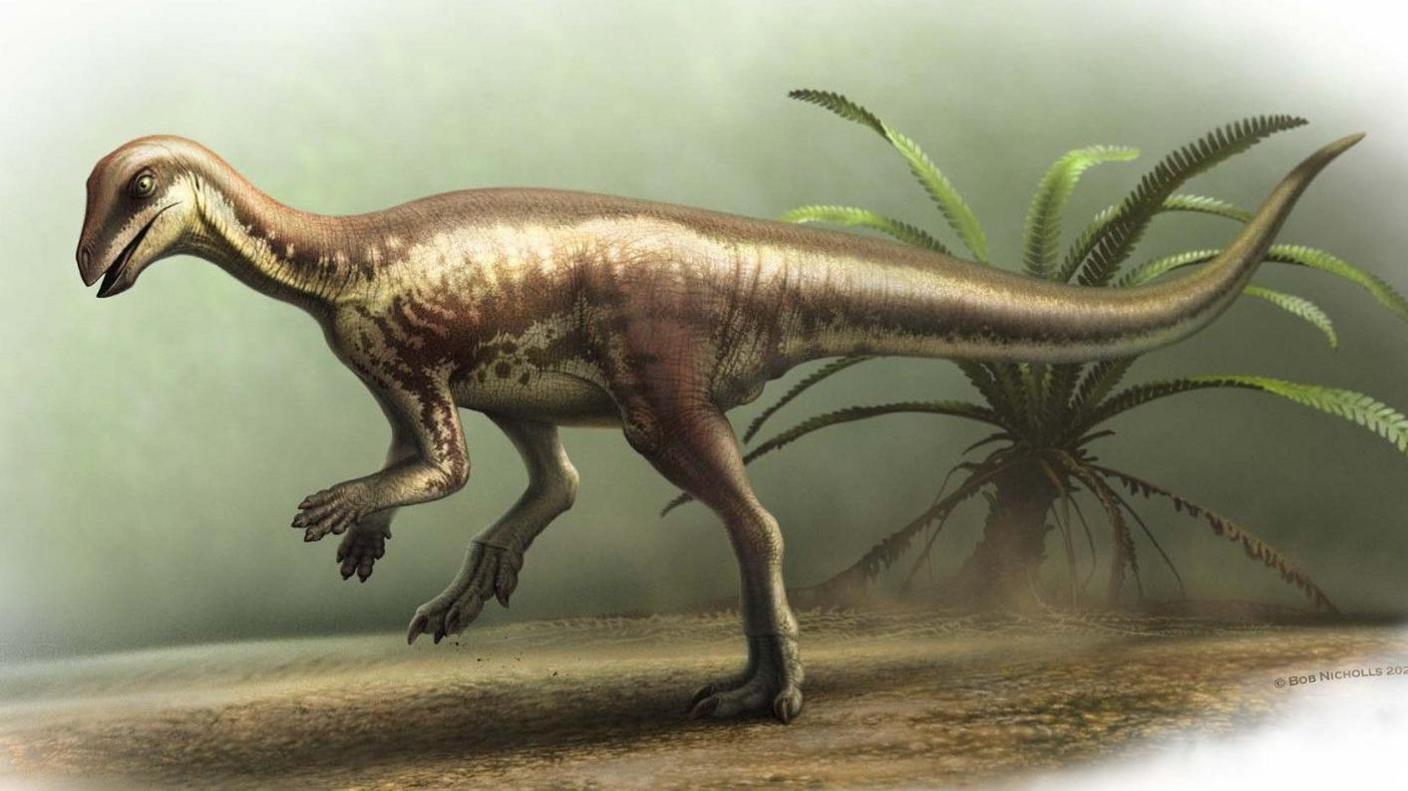New species of dog-sized dinosaur to go on display in London

An artist's impression of how Enigmacursor mollyborthwickae might have looked
- Published
Experts have discovered a new small species of dinosaur.
It has been named Enigmacursor mollyborthwickae, and scientists say it lived around 150 million years ago, during the late Jurassic period.
It roamed around what is now North America, running around the feet of famous giants like the Stegosaurus.
It will now become the first new dinosaur to go on display at London's Natural History Museum in more than ten years.
More dino news
What is the 'Prince of Dragons' dinosaur?
- Published12 June
Fossil discovery suggests sauropods didn't chew their food
- Published10 June
Birds lived in the Arctic during the time of the dinosaurs
- Published30 May
What did experts discover about the new dinosaur?

The dino will be on display at the Natural History Museum in London
The small dinosaur was found in America's Morrison Formation, in the western United States - which has previously produced some of the world's most famous dinosaurs, including the Stegosaurus and Allosaurus.
When it was first discovered, it was wrongly categorised as a Nanosaurus but scientists have now worked out it is a different animal.
Its new name, Enigmacursor, means 'puzzling runner' - and palaeontologists think it was the size of a labrador dog.
According to experts, it stood 64 cm tall and 180 cm long but with much bigger feet and a tail that was "probably longer than the rest of the dinosaur."
The fossilised remains are the most complete of any in the world for early small dinosaurs.
Traditionally, big dinosaur bones have been the biggest prize, so there has been less interest in digging out smaller fossils.
Palaeontologists hope that this new discovery could help them understand the diversity of dinosaurs in the Late Jurassic period.

The species was originally found in a part of western America known as the Morrison Formation
Professor Susannah Maidment, from the Natural History Museum, said the new species could be the first of many small dinosaurs to be found in western USA.
"While the Morrison Formation has been well-known for a long time, most of the focus has been on searching for the biggest and most impressive dinosaurs."
She added: "Smaller dinosaurs are often left behind, meaning there are probably many still in the ground.
"Enigmacursor shows that there's still plenty to discover in even this well-studied region."
The new dino will now go on permanent display at London's Natural History Museum.
